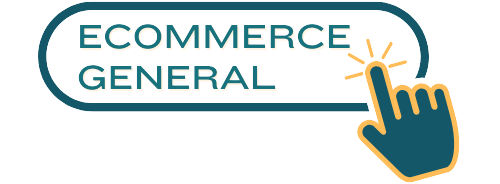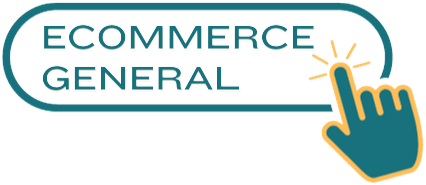In today’s digital-first economy, micro, small, and medium-sized enterprises (MSMEs) are discovering the transformative power of ecommerce. During our recent session led by Ecommerce General Leighton Campbell, we explored the essential building blocks required to establish and grow a successful ecommerce business. The session served as a practical blueprint for anyone looking to take their business online, covering everything from understanding ecommerce to executing digital sales campaigns.
Whether you’re just beginning your ecommerce journey or looking to refine your online strategy, here’s a comprehensive breakdown of what we covered and how you can apply these insights to your own business.
What is Ecommerce?
At its core, ecommerce refers to the buying and selling of goods or services over the internet. It includes not only the online payment process but also encompasses order collection, data exchange, product delivery, and customer support.
Transactions can be completed via various methods: bank transfers, credit cards, cash, and even mobile money. A typical ecommerce flow involves a customer browsing a website, selecting products, making a payment, and receiving the item either physically or digitally. The backend systems that support this process—like inventory management, payment gateways, and CRM tools—are just as crucial as the frontend.
Why Ecommerce Matters for MSMEs
Ecommerce is not just a trendy option—it’s a cost-effective way for MSMEs to scale their businesses without the heavy investment of a traditional brick-and-mortar setup. Here are a few compelling reasons to consider going digital:
- Lower overhead costs: No need for physical storefronts.
- Wider reach: Sell to local, regional, or global markets.
- 24/7 sales window: Your shop is always open.
- Data-driven decisions: Track and optimize customer behavior and sales trends.
In Jamaica, for example, where mobile phone usage and internet penetration are high, ecommerce presents a significant opportunity for MSMEs to tap into a digitally connected audience.
Ecommerce Viability in Jamaica
The ecommerce landscape in Jamaica is ripe with opportunity. With 73% of the population having access to banking services and about half using debit or credit cards, a significant portion of the population is already primed for digital transactions. Mobile wallets and mobile money solutions are gaining traction, especially among the unbanked, offering alternative routes to payment collection.
The key takeaway here is that the infrastructure exists—but success will depend on the strategic execution of your business model and how well it aligns with your target audience.
Choosing the Right Ecommerce Business Model
One of the most critical decisions you’ll make is choosing the business model that fits your product or service. The session explored several ecommerce models:
- B2B (Business-to-Business): Selling wholesale to other businesses.
- B2C (Business-to-Consumer): The most common model—selling directly to consumers.
- C2B (Consumer-to-Business): Where individuals offer products or services to companies.
- C2C (Consumer-to-Consumer): Think marketplaces like eBay or Facebook Marketplace.
- Dropshipping: Selling without holding inventory; products are shipped directly from the supplier.
We also touched on white labeling and private labeling, which involve reselling generic or custom-branded products under your business’s name. Choosing the right model requires understanding your target market, budget, logistics, and operational preferences.
Digital Sales Models and Customer Support
Sales models can vary from self-serve (like Amazon) to personal-service (like luxury perfume stores). Your choice here will influence the kind of systems and customer support channels you’ll need.
- Self-Serve: Customers browse and buy independently.
- Personal Service: You offer guidance and help in making a decision.
Customer support channels could include live chat, WhatsApp, email, or even phone calls. The key is to ensure that your chosen channels align with your audience’s preferences and provide a smooth buyer experience.
Picking the Right Ecommerce Platform
One size doesn’t fit all when it comes to ecommerce platforms. During the session, we explored three main types:
- Custom-coded solutions – High flexibility, high cost, longer development time.
- Open-source CMS (Content Management Systems) – Moderate cost, requires technical know-how (e.g., WooCommerce on WordPress).
- Closed CMS or SaaS platforms – Ready-made solutions like Shopify or Wix; fast setup, monthly fees, less customization.
Your platform choice should balance budget, time to market, technical skills, and scalability needs. The session stressed the importance of proper product setup—images, descriptions, and specifications are all critical for customer trust and search engine visibility.
Managing Orders, Payments, and Fulfillment
Once your store is set up, you’ll need robust systems to manage orders, collect payments, and fulfill deliveries.
- Payments: Use multiple methods—bank transfer, credit card, mobile money, PayPal, or Stripe. Diversify options to suit various customer preferences.
- Fulfillment: Consider delivery zoning, logistics providers, or even non-physical delivery options like digital downloads or service delivery. Security features like login protection for digital goods were also emphasized.
The smoother and more transparent your order and delivery process is, the more likely customers are to return.
Lead Generation and Customer Segmentation
Attracting and retaining customers starts with smart lead generation. We explored various channels for finding your first (and repeat) buyers:
- Social media
- Google search
- Email marketing
- Offline promotions
However, casting a wide net isn’t enough. You must define clear customer segments—groups based on age, gender, location, or behavior—and tailor your messages to them. This targeted approach ensures your efforts resonate and convert.
Launch Campaigns: A Step-by-Step Approach
Once your ecommerce foundation is in place, launching effectively is crucial. The recommended launch framework includes:
- Naming your campaign: Give it an identity.
- Defining duration and objectives: Set clear goals.
- Allocating a budget: Start small, scale with success.
- Choosing promotional channels: Use where your audience spends time.
Tracking performance from day one allows you to tweak campaigns in real-time for maximum impact.
Final Thoughts: Apply the Blueprint
The session concluded with a powerful reminder—knowledge is only useful when applied. Each participant was encouraged to implement the strategies shared, starting with their own ecommerce blueprint. The course emphasized simplicity and consistency over complexity. Ecommerce doesn’t require perfection—it requires progress.
If you’re an MSME looking to launch or scale your online presence, remember that success comes from:
- Choosing the right model and platform
- Building a customer-first experience
- Leveraging tools for payments, delivery, and communication
- Continuously learning and adapting your strategies
The academy is open and waiting. Now’s the time to take your business to the next level.
Ready to launch your ecommerce journey? Start small, plan smart, and grow confidently. Your online business begins today.
Ecommerce Fundamentals for MSMEs: A 10-Step Guide to Launching Your Online Business

